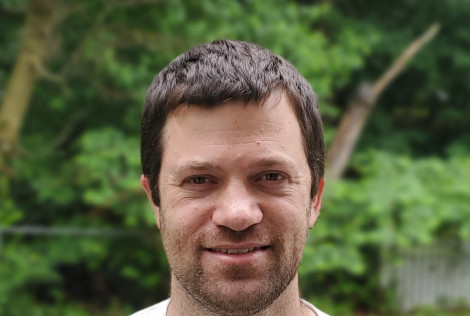Ecology, Marine biology and Plant Sciences
Biological Dynamics in Diverse Ecosystems and Agricultural Crops
Marine Biology • Microbial Ecology • Behavioral Ecology • Plant Sciences
At Bar-Ilan University’s Faculty of Life Sciences, we connect molecules to ecosystems, using advanced technologies and long-term fieldwork to explores how a changing planet reshapes life, and how life adapts in return.
Marine Biology: Decoding the Ocean's Endurance
How do organisms time their lives in a world threatened by human light pollution?
Marine Biology research seeks to answer this question by investigating environments from shallow waters to the deep sea, utilizing Marine Palaeoecology to establish crucial baselines against which we measure modern human impacts. We study the molecular basis of time, examining the evolution and function of circadian and circatidal biological clocks in cnidarians (corals and sea anemones) that allow them to anticipate daily and tidal rhythms. We also tackle the mystery of sleep, exploring its fundamental function in simple organisms like jellyfish and sea anemones.
A major research avenue focuses on Ecological Light Pollution (ELP)—analyzing how Artificial Light at Night (ALAN) disrupts natural cycles by interfering with coral spawning synchronization and growth, as well as the sleep/wakefulness cycles of fish in the Red Sea.
Our innovative conservation efforts include paleo-reef reconstruction in the Red Sea and the development of 3D-printed, mobile artificial reefs monitored by non-invasive environmental DNA (eDNA).
Microbial Ecology: Harnessing Earth’s Tiny Architects
How do the microbial ancestors of all plant life organize themselves to regulate global carbon cycles?
Beneath these seascapes, microbial life drives the ocean’s engine. Our research centers on marine microbial ecology and biogeochemistry, focusing on how phytoplankton live and die in dynamic water masses and how microscale interactions scale up to shape global cycles. We investigate diatoms, keystone primary producers, and the viruses that infect them, asking when infection tips communities from growth to collapse, and how that switch controls carbon export to the deep ocean. Focusing on Cyanobacteria, ancient organisms that gave rise to chloroplasts, our research teams study cyanobacterial biofilm, examining the division of labor and specialization within biofilms, as well as the phenomenon of self-suppression of biofilm development.
A key area of inquiry is the role of Cyanobacterial extracellular membrane vesicles—the "tiny couriers," that mediate stress response and communication within the microbial world.
Wildlife and Behavioral Ecology: The Hidden Costs of Survival
What trade-offs do animals make between stress, reproduction, and survival in the wild?
On land, our wildlife and behavioral ecology research asks why animals behave as they do, and what it costs or gains them, through the lens of steroid hormones measured in the wild. Long-term fieldwork paired with non-invasive hair testing quantifies integrated glucocorticoid and androgen levels, revealing the hormonal trade-offs behind survival, mate choice, reproduction, and social behavior and clarifying well-being from individuals to populations across natural and human-altered habitats.
Plant Sciences: Building Resilient Crops Through Molecular Language
Can we engineer crops that are immune to heat, disease, and drought by decoding the plant's distress signals?
Our plant sciences research decodes stress as a molecular language of reactive oxygen species (ROS)—linking ROS metabolism to build heat-resilient pollen and redox-savvy crops.
A vital research avenue examines the heat stress response in pollen, focusing on mechanisms that govern pollen thermotolerance to safeguard the global food supply against rising temperatures. Reproductive development is highly sensitive to heat stress, making pollen resilience essential.
In parallel, a molecular-genetic research in Cucurbitaceae (melon, cucumber, watermelon) applies genome mapping, diversity analysis, and gene editing to clone and validate disease resistance genes—the plant’s natural “immune system”. Our findings advance marker-assisted breeding and deepen understanding of resistance gene function and mode of action.
Researchers
-
Prof. Emeritus Cohen Yigal
972-3-5318251 -
Dr. Eyal Gal
972-3-7384031 -
Prof. Koren Lee
972-3-7384371 (office); 972-3-7384372 (lab) -
Dr. Kranzler Chana
03-7384583 -
Prof. Levy Oren
972-3-5318030 -
Prof. Miller Gad
972-3-7384553 (office); 972-3-7384311 (lab) -
Prof. Perl-Treves Rafael
972-3-5318096 -
Dr. Roichman Asael
972-3-7384295 -
Prof. Schwarz Rakefet
972-3-5317648 (office); 972-3-5317790 (lab) -
Dr. Shaul Orit
972-3-5317704













